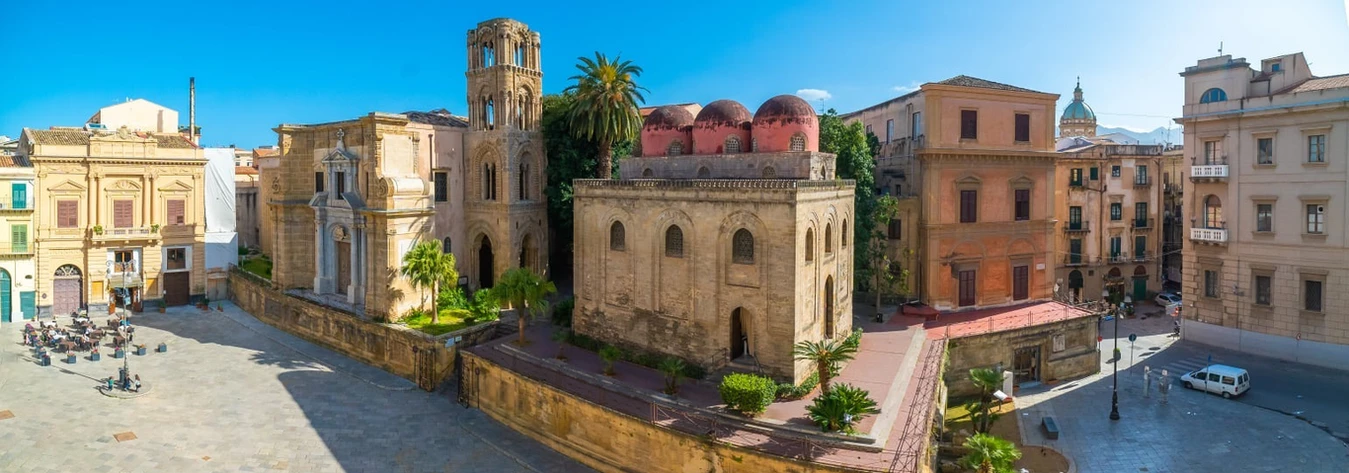

At the top of the list of reasons why one should visit Palermo is the multitude of magnificent churches. You don't have to be a lover of historical buildings to be dazzled by the sparkling beauty of the local sanctuaries. After this article, you will know Palermo's most famous churches and have insider tips for your visit.
by: Eugenio Rusignuolo | 16 Dec 2021
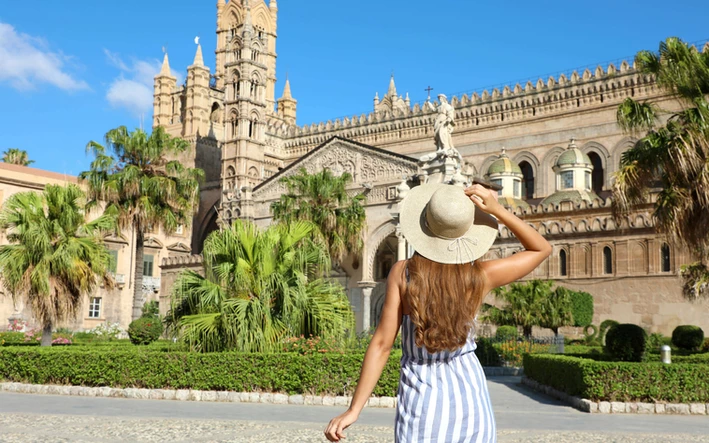
Borrowing from Goethe's statement about Sicily, one could argue that Palermo makes no picture at all in the soul without the majestic cathedral, and it is here that the key to everything lies. The Cathedral of Maria Santissima Assunta (Most Holy Mary Assumed into Heaven) is a mirror of Palermo's captivating history.
In its present form, it contains a unique Norman-Arabic style mix from the years 1184 and 1185, which was supplemented by numerous influences in the following centuries. For many, the church is the most beautiful building in Palermo.
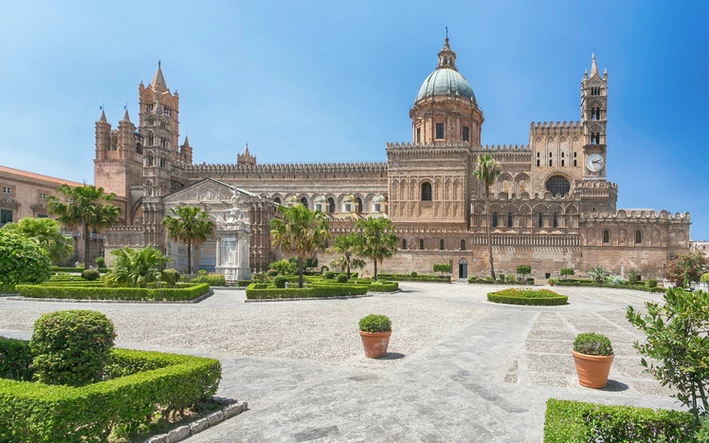
One of the many secrets of Sicily awaits you on one of the columns at the entrance to the cathedral. There is an Arabic inscription of a sura from the Holy Koran, which has even been approved by the Pope. The inscription dates from the time of Muslim rule over Sicily in the 820s to 1070s. At that time, the square where this monument stands belonged to the Great Mosque of Bal'harm (the Arabic word for Palermo). The verse is from the seventh sura of the Holy Qur'an, which praises God and his creations.
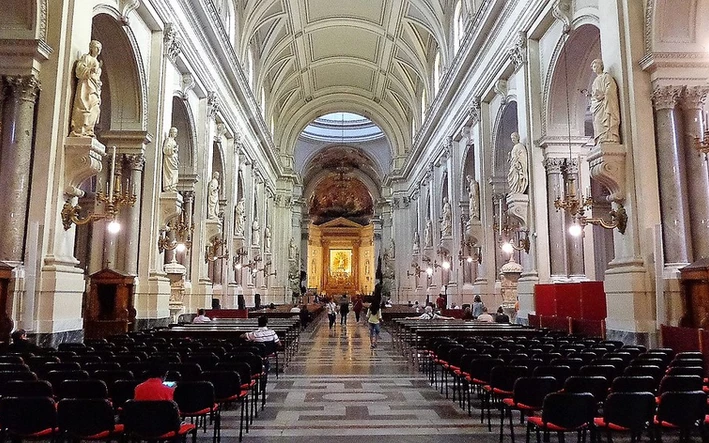
The cathedral is not only impressive from the outside. The baroque-looking basilica itself houses some important relics and art treasures, such as a statue of the Madonna by the 15th century sculptor Francesco Laurana and the Madonna della Scala by Antonello Gagini.
In the lower church, the so-called crypt, there are also the relics of former archbishops of the city and royal tombs. Henry VI, the German Emperor Frederick II and Roger II rest here, as do the queens Constance of Sicily and Constance of Aragon.
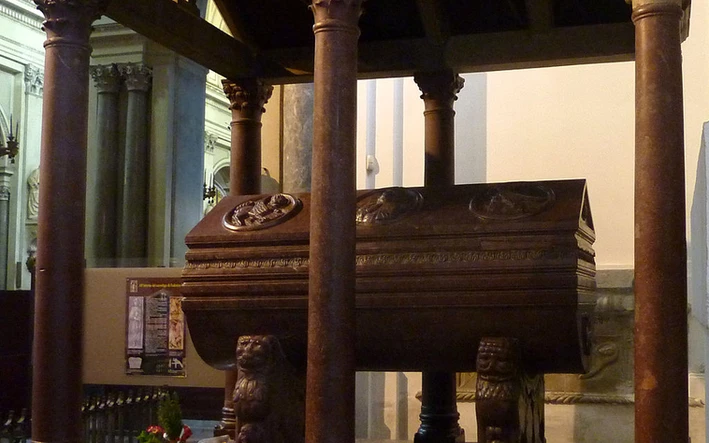
The church has a special significance because the relics of Saint Rosalia have been kept here in a chapel since 1632. She is the patron saint of Palermo and is said to have once cured the city of the plague.
Even today, the silver urn with its remains is carried once a year from the cathedral through the streets of the city. Thousands of people accompany this spectacle on 15 July and celebrate the feast of Saint Rosalia.
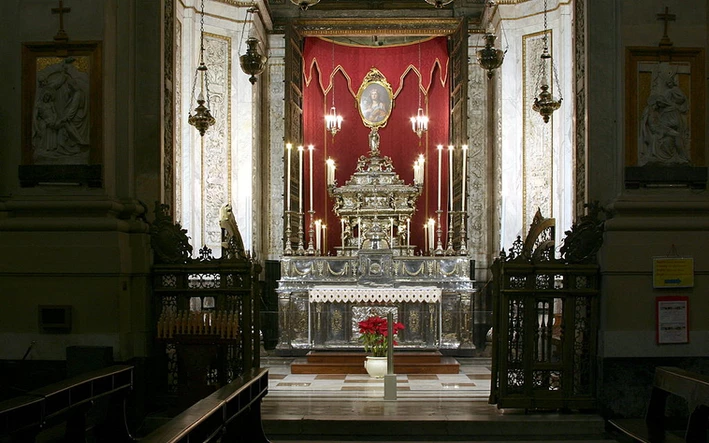
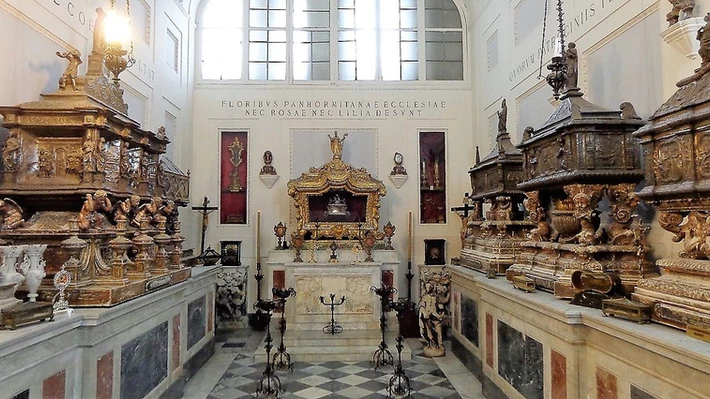
To the right of the Chapel of St Rosalia is a treasury containing liturgical vestments, culminating in a crown in the Byzantine style. Friedrich II. hatte diese seiner Gattin Konstanze von Aragon mit ins Grab legen lassen.
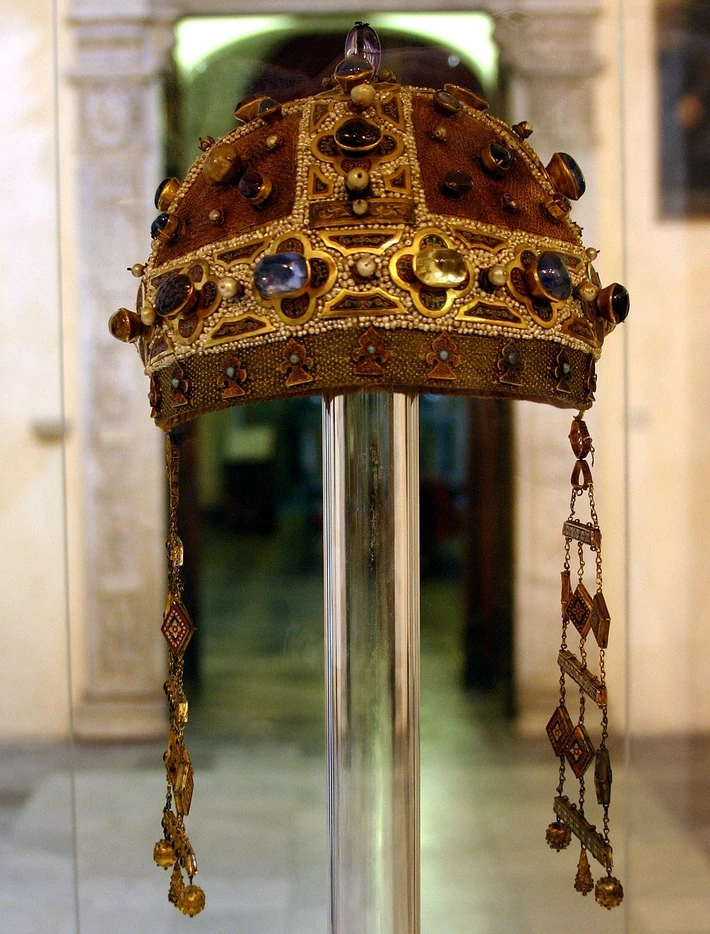
Our tip:
Take the opportunity and climb to the roof of the church.
For the climb up a narrow spiral staircase made of stone, your eyes will be rewarded with a breathtaking view of the city.
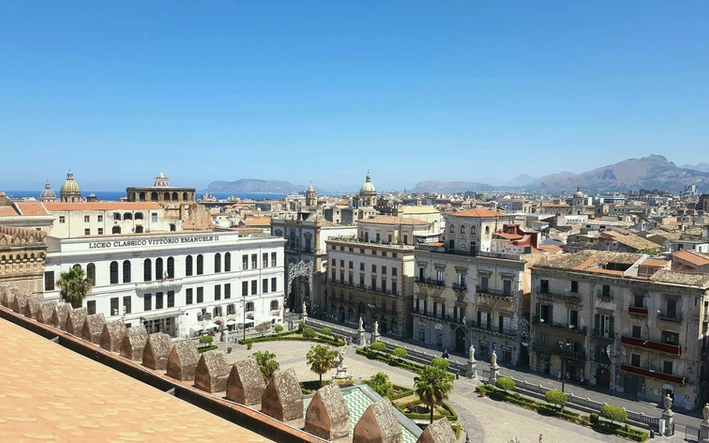
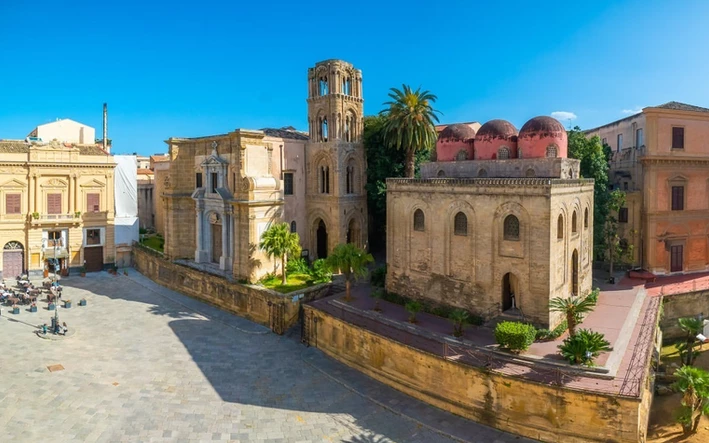
If you stroll along Piazza Bellini, not far from Quattro Canti, several ecclesiastical buildings will amaze you at the same time. On the south side of the piazza, on a small hill, there are two popular churches right next to each other, which is why we list them here as one sight.
On the right is the church of "San Cataldo" from the Norman period and on the left the Santa Maria dell'Ammiraglio (Saint Mary of Ammiratus), also called La Martorana or Admiral's Church, built in the Baroque style and integrating Norman-Byzantine-Arabic artistic elements.
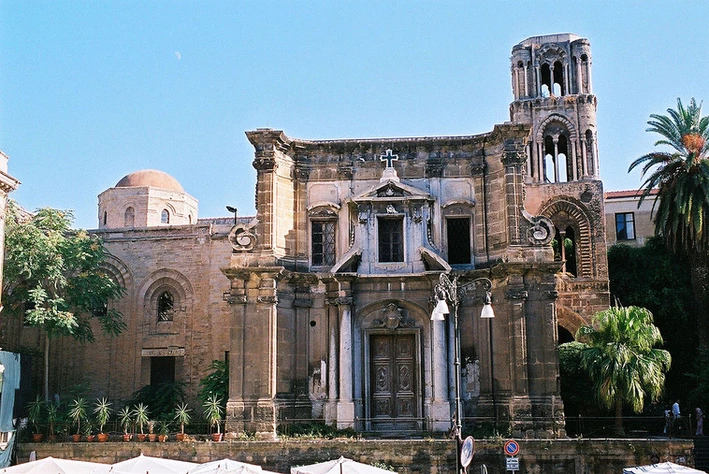
The church of Santa Maria dell'Ammiraglio was built in the middle of the 12th century and underwent numerous structural changes throughout history. Originally it was built over the ground plan of a Greek cross in a square shape and was used by a Greek Orthodox congregation and also served as the municipal court.
In 1435 it was given to the Benedictine convent of Eloisia Martorana and from then on it was called "La Martorana". Under the supervision of the Benedictine nuns, the church was extended in a rectangular shape.
In the 17th century, a Baroque façade was added facing Piazza Bellini. The baroque façade is joined by the bell tower, which is still in its original state on the lower two floors, while the upper floors were added in the 14th century in the Catalan Gothic style. Since 1943, the church has been under the authority of the Italo-Greek parish of Palermo.
Our tip:
Often, "La Martorana", like its neighbouring church, is perceived by travellers as inconspicuous from the outside. The danger is therefore to leave the piazza again after visiting the neighbouring fountain Fontana Pretoria without entering the church. Don't make this mistake and intoxicate yourself with the unique Baroque - Byzantine mix inside the church.
The round arches and ceilings inside the church are decorated with Byzantine mosaics from the 12th century, making them some of the oldest mosaics in Sicily. It is no coincidence that the church is listed by UNESCO.
A highlight is the depiction of Jesus enthroned in the dome mosaic as well as the depiction of an unusual scene on the side wall in which Roger II is crowned by Jesus himself and not, as was customary at the time, by the papal head.
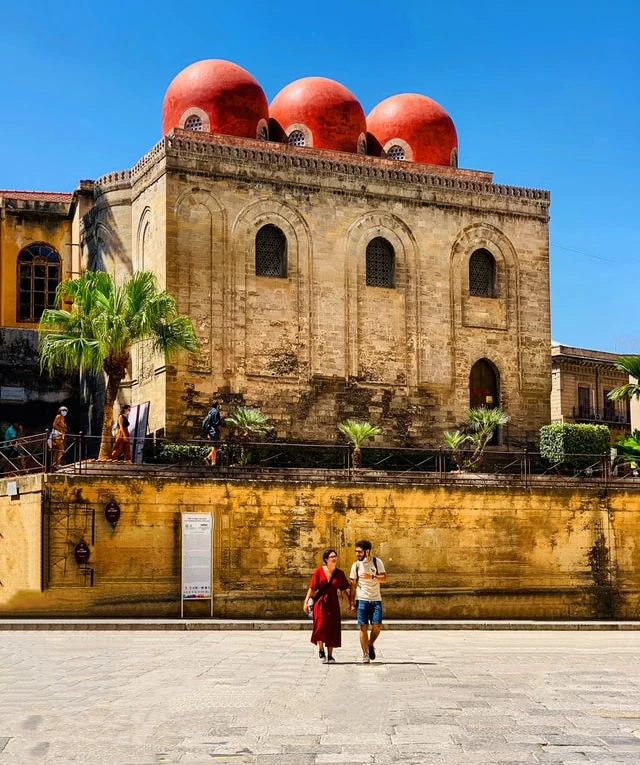
The second church building in the Piazza Bellini is the Church of San Cataldo. It is one of the last basilicas in Sicily in the Norman style and captivates with its purist beauty. All the more striking from the outside are the three small hemispherical domes of the church with their contrasting red colour.
Another striking feature of the church is the surrounding Arab cornice, which stands out as a decorative element against the otherwise plain façade and bears witness to the long Arab rule over Sicily.
The church was built from 1154 onwards on the initiative of Maio of Bari, William I's great imperial admiral. He intended to use it as the private chapel of his palace. However, in 1160, the year of its completion, Maio fell victim to an assassination attempt by noble conspirators.
Subsequently, in 1182, the building was given by King William II to the Benedictines of Monreale, who kept it in good condition until 1787. They used it as a hospital before it was converted into a post office. The correspondence of the Kingdom of Sicily took place from here. In 1885, Maio's palace was demolished and the chapel restored.
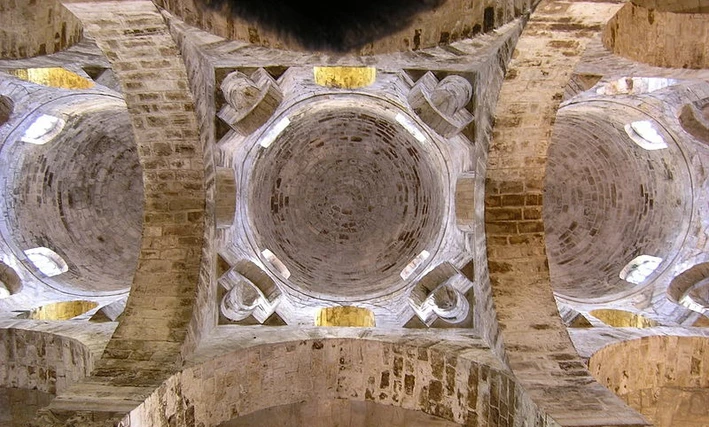
The interior of the three-nave church is simple, but worth seeing. The high walls of exposed sandstone pave the way up to the dome vaults, which are set off by the light coming in from the small windows. Under this ceiling spectacle, the round arches supported by antique columns separate the three naves of the church from each other.
In the largest of them, the central apse, there is a white altar. Above it, the symbol of the Jerusalem Cross adorns the door and the window. The cross makes it clear that the basilica has been owned by the Order of the Knights of the Holy Sepulchre of Jerusalem since 1937.
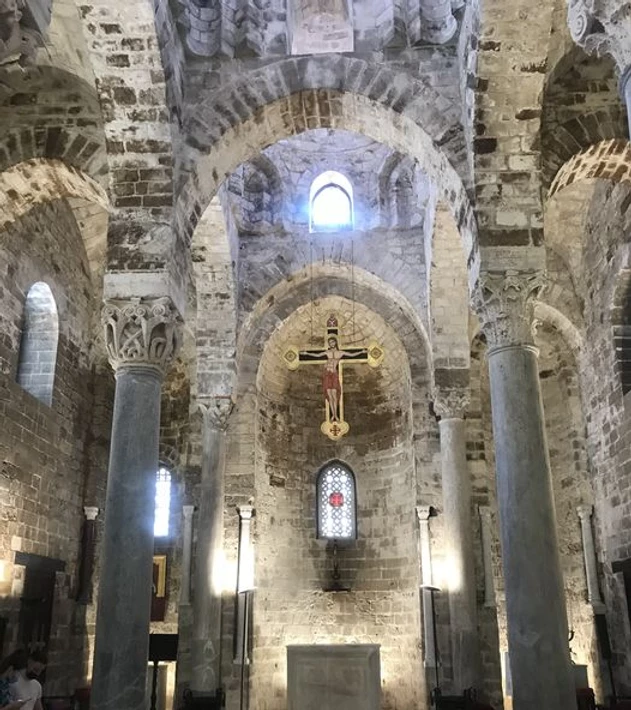
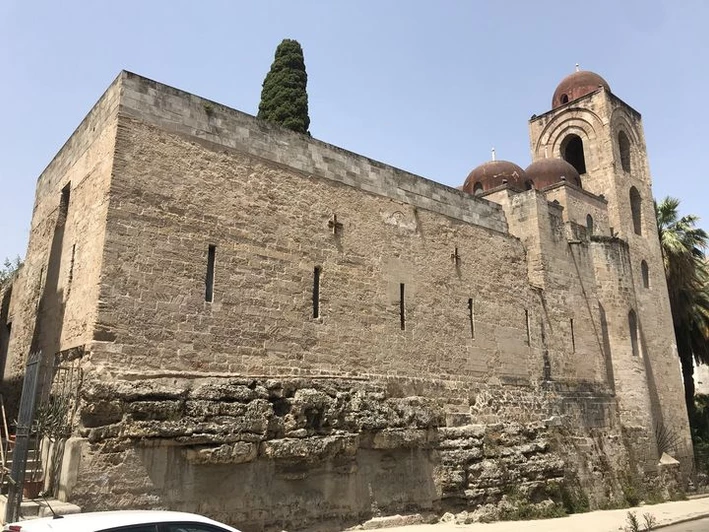
Just a few steps from Palazzo Reale in Palermo, the church of San Giovanni degli Eremiti is another architectural testament to the fact that many cultures and styles have intermingled throughout history in Sicily. The church was built in the 6th century AD as a Byzantine chapel. Between 827 AD and 1091 AD at the time of the Arab conquest, the church was transformed into a mosque with touches of Romanesque and Italian Gothic architecture.
The oriental influence of this period is still visible today in the domes of the church, although they were only given their red colour later in the 20th century. In 1136, under Norman rule, King Roger II migrated the mosque to a monastery and from 1464 it was put under the control of the Benedectine monks. Unlike other rulers, the Normans did not categorically destroy their conquered cities, but tolerated cultures and religions. It is probably thanks to them that this unique architectural mix of Western and Islamic cultures was created.
Parts of the church were used in reconstructions and over the centuries other parts of the building were added. At the end of the 19th century, the church was uncovered again and restored. In the process, post-medieval buildings were removed again. A small cloister and garden in the Arab-Norman style from the 13th century belong to the church. It offers a place of tranquillity that many travellers appreciate as a contrast to the lively Mediterranean metropolis.
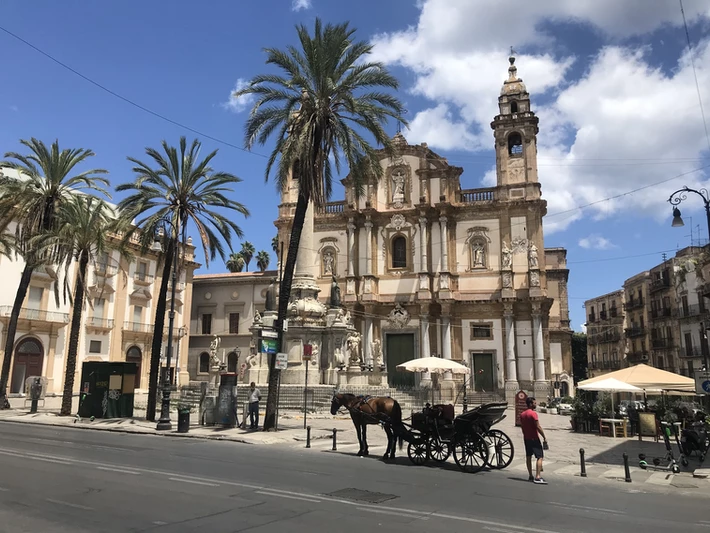
Yes, you are still in Palermo and no, you won't find the church of San Domenico in the Caribbean. It stands in the centre of the city, in the historic district of La Loggia, on Via Roma. The palm-lined Piazza Domenico with the church in the background is a grateful photo motif, also because many elaborately decorated, Sicilian wooden carts (Italian: Carretto siciliano) stop here and wait for their passengers, or because of the Column of the Immaculate Conception (Colonna dell'Immacolata) in the middle of the square.
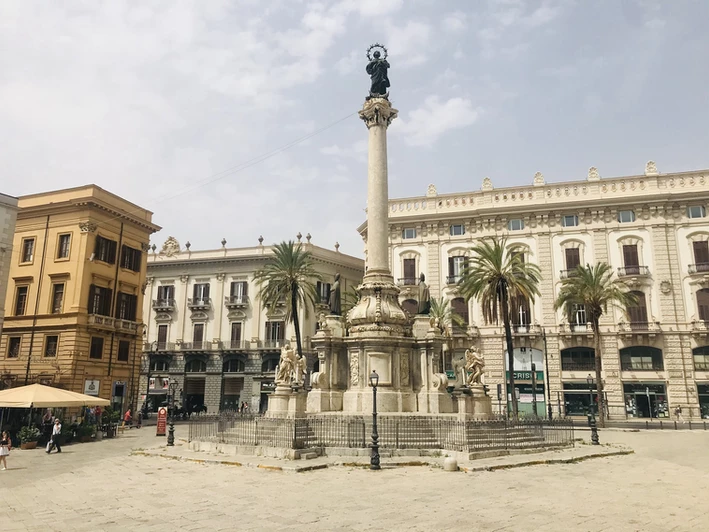
The church of San Domenico was built in 1640 by the Dominican architect Andrea Cirrincione. It was built after the demolition of a previous Renaissance building, which had already been erected around 1458. The façade of the church was remodelled in Baroque style in 1726. The frame consists of two bell towers, which are intended to slenderise the figure.
From the middle of the 19th century, the church developed into a memorial and burial place for Sicilian personalities. In addition to Sicilian intellectuals and people from public life, the Parlermitans commemorate here above all those who initiated the end of the Mafia - first and foremost the judges Paolo Borsellino and Giovanni Falcone, two of the toughest opponents of the "Cosa Nostra" Mafia in southern Italy, who both lost their lives in 1992.
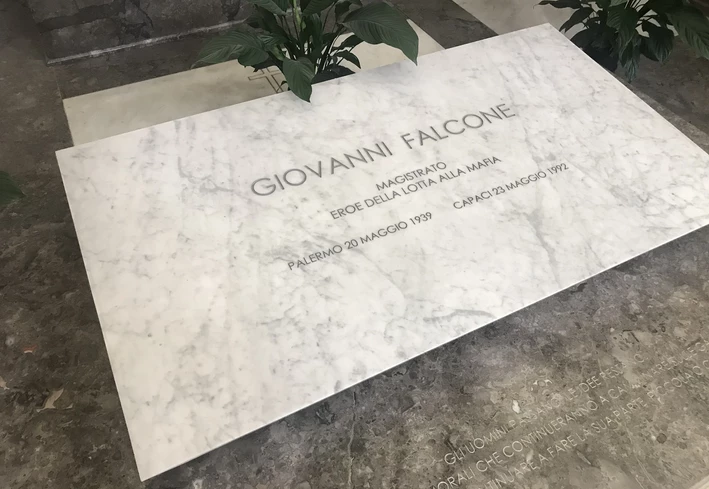
The interior of the Church of San Domenico is the largest church interior in Sicily. The walls are decorated with statues of Dominican saints and popes. These decorations are the work of Giovan Maria Serpotta, the grandson of the great Giacomo. The church of San Domenico is Palermo's second most important church after the cathedral.
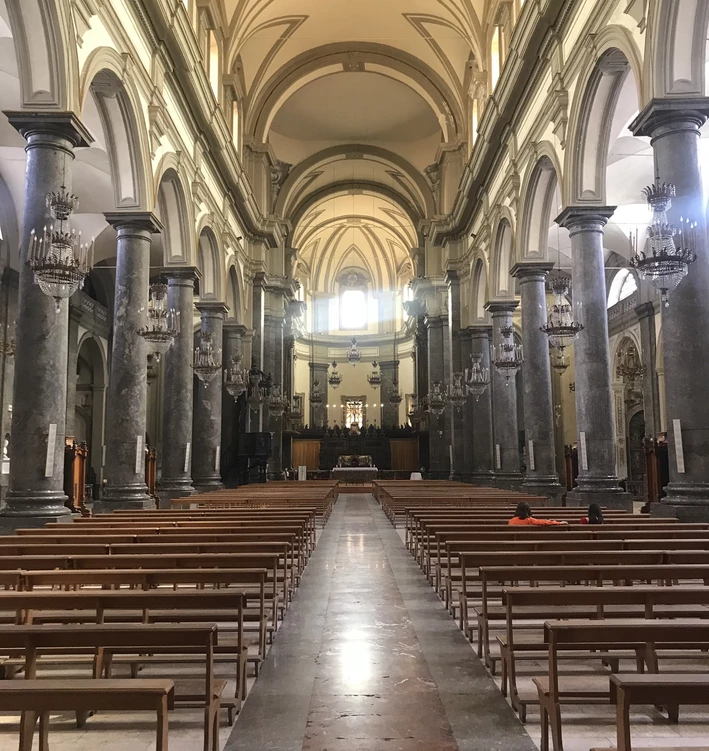
Our tip:
To the left of the San Domenico church is the Rinascente shopping centre with Cafe Obica on the top floor. The outdoor area of the cafe has a fantastic terrace overlooking the church and San Domenico square. A great place to break or finish your church tour with an Aperol and Sicilian olives.
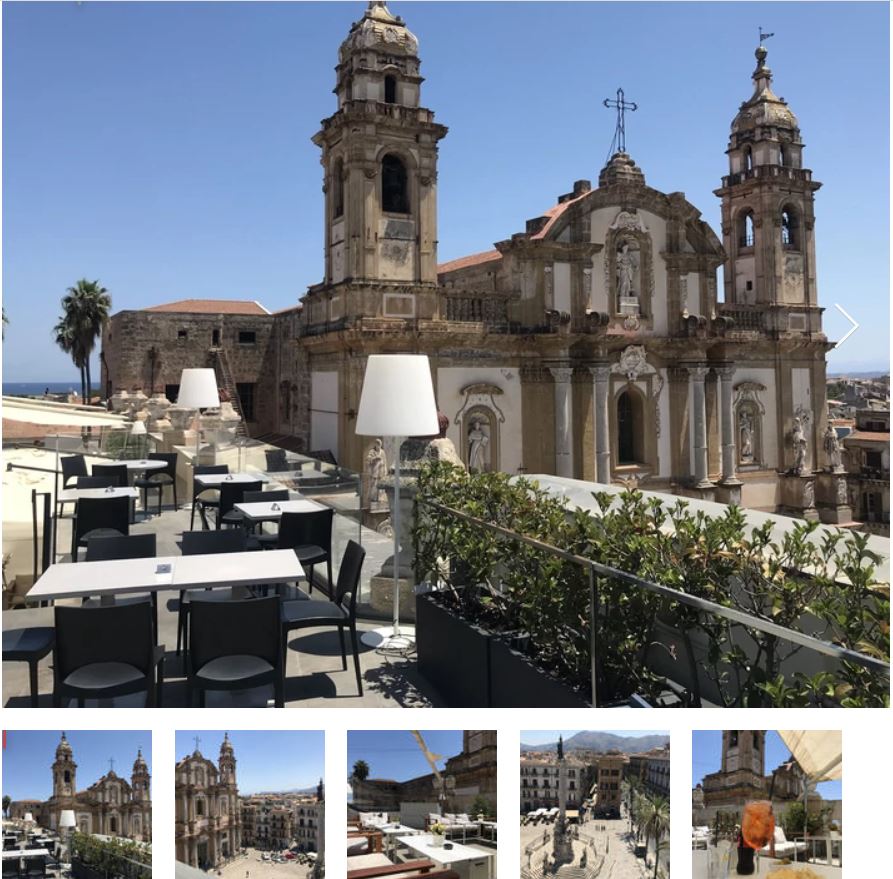
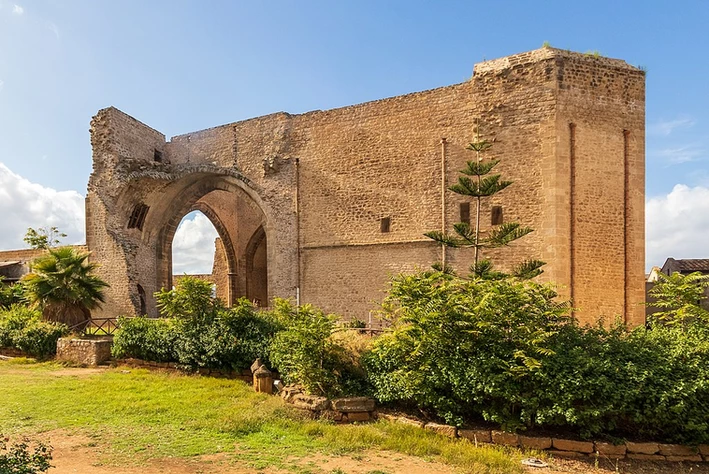
The church of Santa Maria Dello Spasimo has a special place among Palermo's churches. It has a Gothic design and it is a church without a roof. Built in 1509, it was abandoned as a church only 70 years after its completion because it was close to the city wall and needed as part of the defence system.
After the Pope allowed the secular use of the buildings, it served various purposes. In 1624 as a military hospital for plague patients, later as a granary, poorhouse and hospital. Due to the flood of 1931 and two earthquakes in 1940 and 1968, among other things, the building deteriorated into ruins, which have been reopened to the public since 1998.
Santa Maria Dello Spasimo is now used for open-air events because of its great acoustics and is home to a jazz school. With its bare walls and skeletal arches, the former church conveys a very special atmosphere and leaves a deep impression on the visitor.
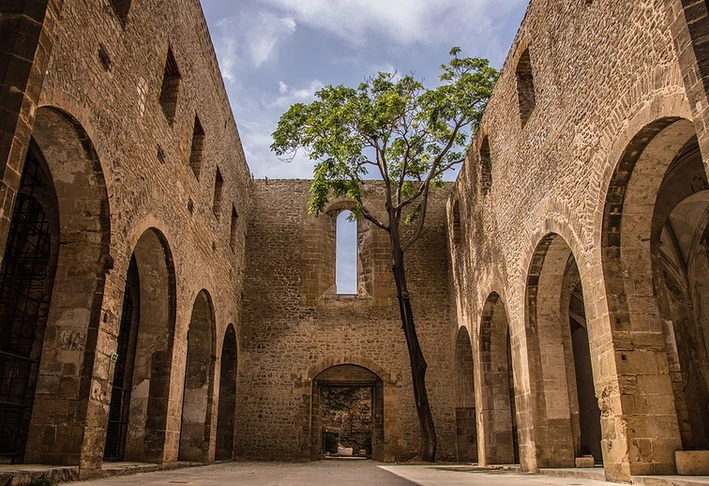
There are 85 church buildings in Palermo. Many of them are world-famous. We have presented the most important churches from our point of view.
A striking number of churches are built according to the Arab-Norman model and their red-coloured domes are reminiscent of Islamic culture. Other buildings take you back to the Gothic, Baroque or Classicist periods and bear witness to the many shades of the Christian faith.
Actually, two very famous churches are missing from our list. There is the Monreale Cathedral. Because it is a bit outside and represents a separate excursion that you cannot do on foot, we have listed it separately in our "Palermo Top 10 Sights" section.
And then there is the world-famous Cappella Palatina, the small court chapel of the Palazzo Reale (Norman Palace). We have noticed that many travellers lose track if you assign the chapel to the churches and then additionally recommend visiting the Norman Palace, where it reappears. Therefore, we have assigned the chapel to the Norman Palace and recommend that you discover it as part of his visit.
No matter how many churches you visit, these churches presented in this article should be among them. Because they are so close to each other, you can easily explore them on foot in one day and get to know the surrounding area with its other sights.
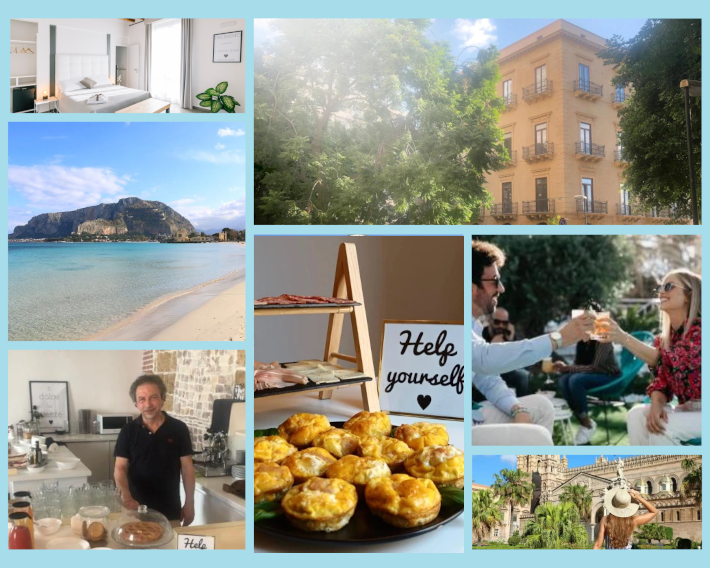
Many travellers want quality accommodation with an authentic atmosphere. At Boutique BnB Dolcevita we offer modern rooms and warm service so you can feel like a local for a while.
More info on the Boutique BnB Dolcevita